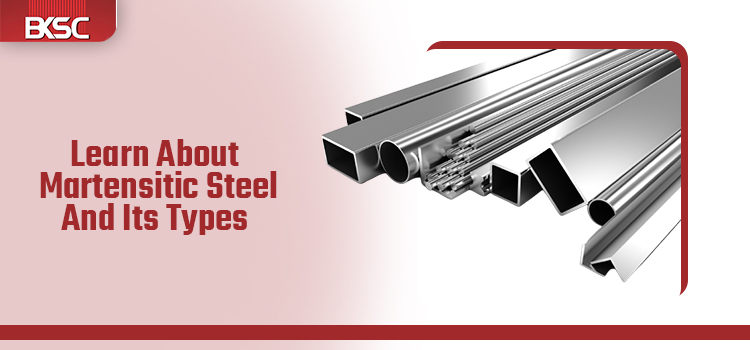Stainless steel is very popular for its heat resistance, corrosion resistance, cleanliness, high strength, and many more. There are different types of stainless steel; the only difference that they might have is the chemical composition. Strength, durability, and corrosion resistance are the common traits of martensitic steel. Because of these qualities, martensitic steel has become an excellent choice for various applications.
In this blog, we will discuss the properties of martensitic steel, its advantages, and many more.
Get the best martensitic steel from the Steel distributor Company India.
What Is Martensitic Steel?
Before we jump into the topic, it is necessary to learn what martensitic steel precisely is.
It is a type of stainless steel that hardens and strengthens through aging treatments and heat because of its composition. This is the process that makes martensitic steel much more robust compared to any other type of steel. Martensitic steel is an ideal option for mechanical valves, medical instruments, mechanical instruments, turbine parts, and many other applications.
What Are The Types Of Martensitic Steel?
On the basis of carbon content, you can easily divide martensitic steel further into different types. These are the two types:
-
Low carbon martensitic steel
The carbon content in the low-carbon martensitic steel is between 0.05 % to 0.25%. Apart from that, the low-carbon version in martensitic steel is comparatively stronger, enhances the potential for fabrication, and provides higher corrosion resistance.
-
High carbon martensitic steel
On the other hand, high-carbon martensitic steel usually has carbon content in the range of 0.61% to 1.50 %. With the help of carbon that strengthens the molecular structure, you will notice an increase in carbon that makes the steel stronger. Although, you must also know that it makes the metal more brittle, and you can not weld or form it into different shapes easily.
Type 420 Stainless Steel
An AISI 420 stainless steel India covers an extensive carbon range between 0.15% to 0.45% carbon content. This is the reason why it has a relatively wide range of hardened levels in both tempered and hardened conditions.
You can get various types 420 stainless at different carbon levels to get specific hardness or mechanical property requirements after heat treatment. Some requirements include cold rolling with a minimum tensile strength of 120,000 psi.
Besides that, steel alloy is also hardenable between RC40-50. You can achieve versatile hardness through heat treat cycles. This makes the 420 stainless steel desirable where it is necessary to have tempered products for certain applications. Some of the applications of 420 stainless steel include cutlery, fasteners, bushings, machine parts, firearms, surgical tools, and valve trim.
Type 440 Stainless Steel
Type 440A stainless steel has the best hardening capability of any other type. However, there is limited formability in the annealed conditions. The company hardens this grade of stainless to over RC50, which allows it to become more attractive for blanking into blade applications.
Its general uses include:
-
Cutlery
-
Bearings
-
Surgical instruments
There are also other applications in which people use type 440A because of its high hardness alongside corrosion resistance.
Final Comments
Contact BK Steel and book your appointment now to learn more about the right type of steel for your manufacturing company.


